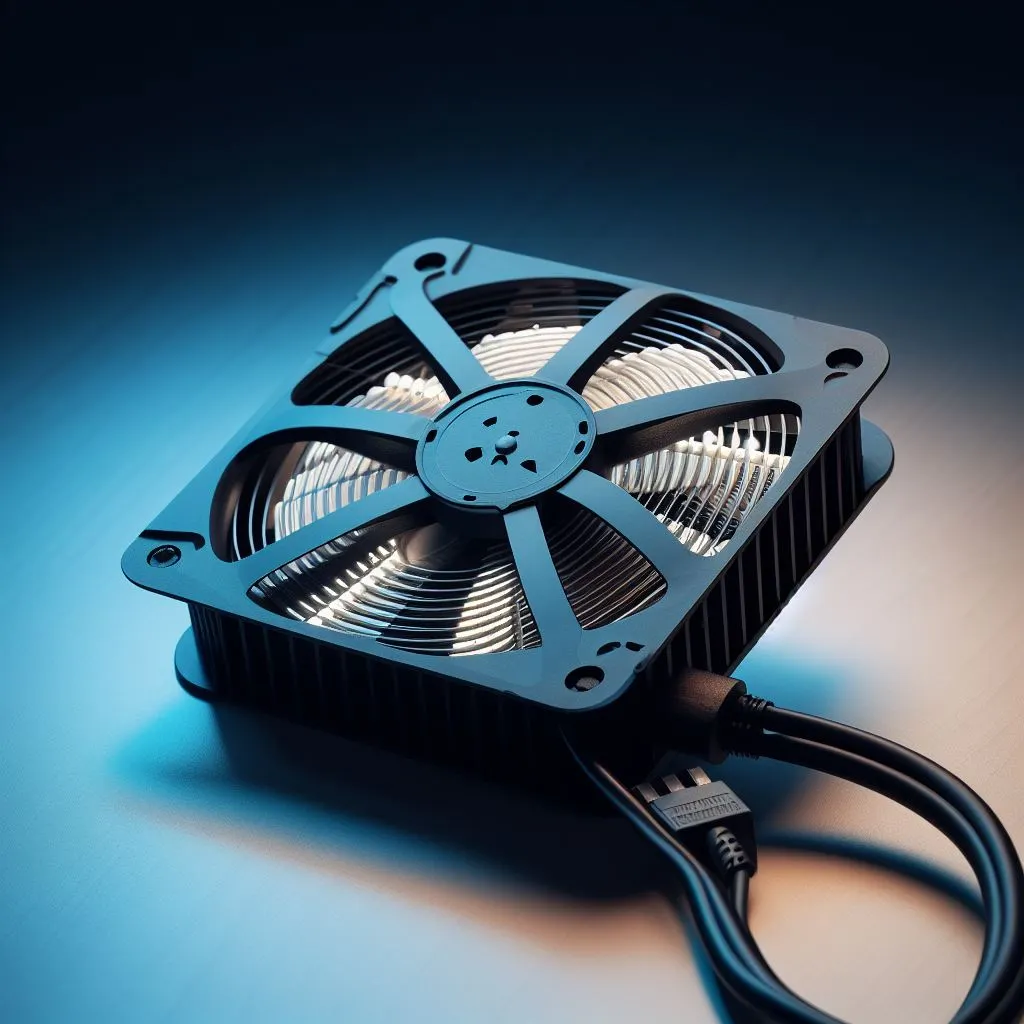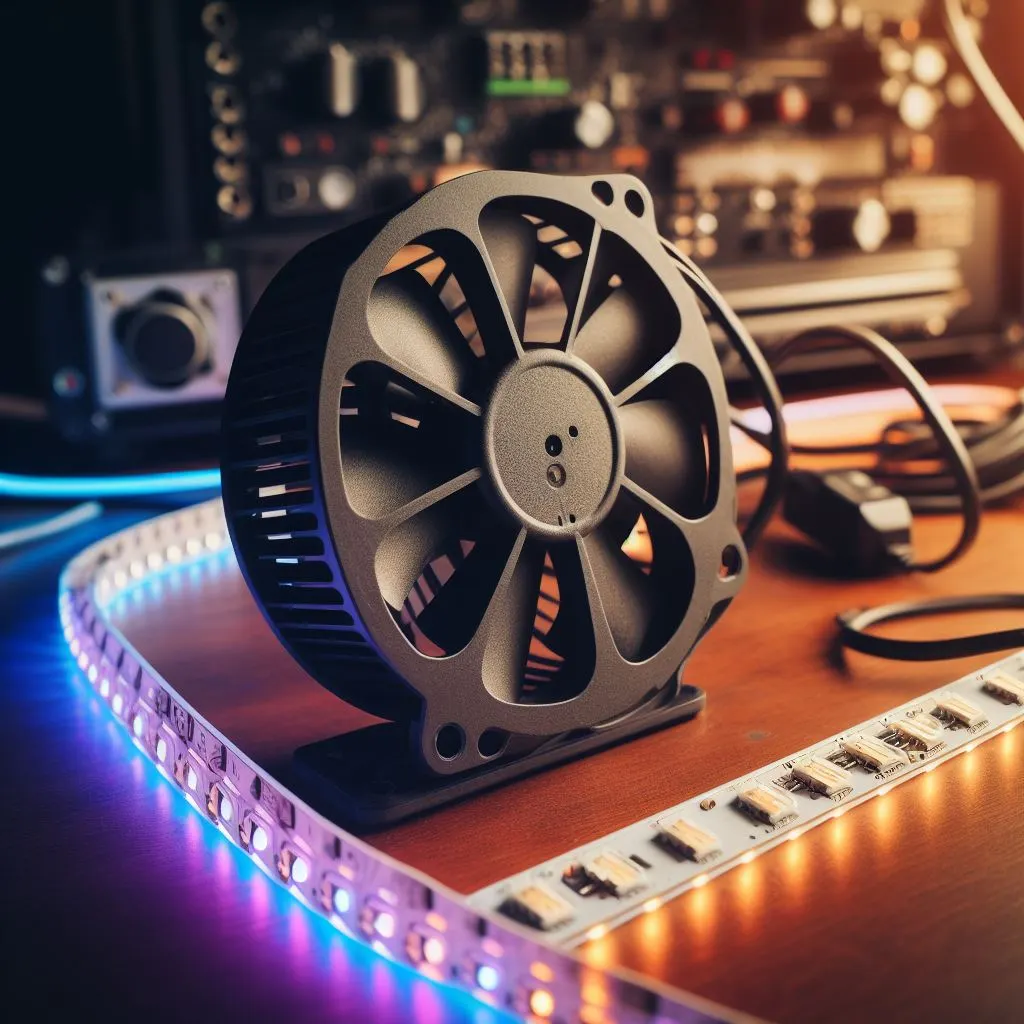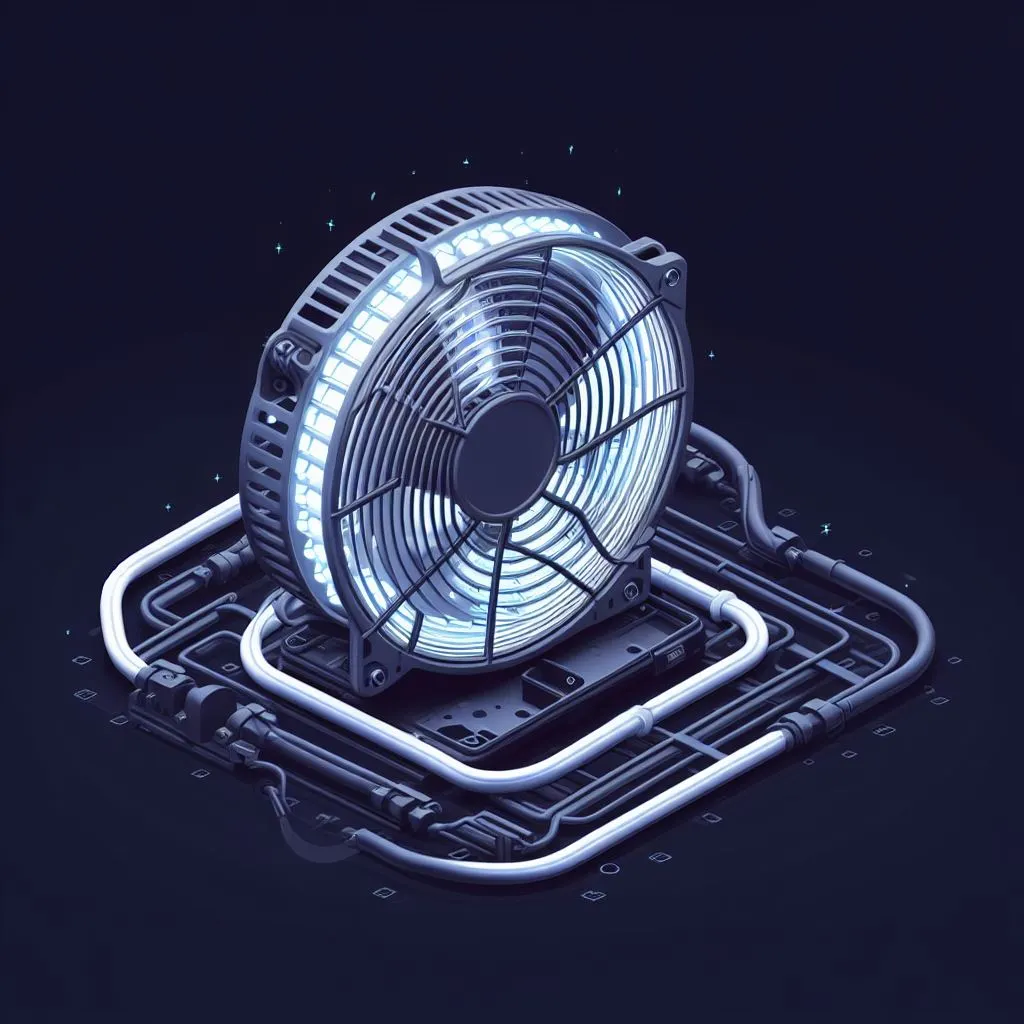LED Strip Lights and Heat Sinks
LED strip lights are becoming increasingly popular due to their long-lasting, energy-efficient lighting. They come in a variety of sizes and formats, making them ideal for both indoor and outdoor applications.
While they are typically reliable and cost-effective, there are certain circumstances in which it may be necessary to use a heat sink to ensure proper performance.
A heat sink is an object designed to absorb and disperse heat away from its origin. In the case of LED strip lights, a heat sink absorbs any excess heat produced by the LED, preventing it from causing overheating and burning out the light. Without a heat sink, LED strip lights could be damaged or fail to operate correctly.
Overview of Heat Sinks
Heat sinks are a helpful tool to use to control and slightly reduce the temperature of LED strip lights. They are designed to take the excess heat away from the surface of the LED strips and disperse it as safely as possible.
Heat sinks are made up of a fan, heatsink, and thermal paste. The fan draws in hot air from surrounding areas and helps to cool down the surface of the LED. The heatsink then absorbs the heat and dissipates it away from the LED strip.
Why is this important? Without a heat sink, LED strip lights could overheat and become damaged. Excessive heat can reduce the longevity of the lighting strips and also cause other components within the system to fail.
Heat sinks are an essential part of proper LED strip light installation, as they help to keep the LED surfaces at safe temperatures for extended periods.
It is important to note that not all types of LED strip lights need an additional heat sink. Strip lights that are installed near vents or high-moisture areas may require a heat sink to disperse the heat away from the LED strips properly.
Additionally, LED strips that run for long periods will benefit from the use of a heat sink. Without one, the LED strip lights could overheat and become damaged.
Read Also: Discover Are Led Strip Lights Allowed in Dorms
Advantages & Disadvantages of Heat Sinks
LED strip lights are a great way to add a unique lighting effect to any space, providing illumination while consuming relatively little energy.
But for these lights to work their best and last the longest, they may require the extra help of a heat sink. In this section, we’re going to talk about the advantages and disadvantages of using a heat sink with LED strip lights.
Advantages of Heat Sinks
The main advantage of using a heat sink with LED strip lights is that it can help reduce the light’s temperature and extend its life. Heat sinks do this by absorbing the heat generated by the light and dissipating it into the air.
This keeps the LED from overheating, which can cause it to fail prematurely. The use of a heat sink can also make the LED strip light more efficient, as it will be able to take in more electricity without overheating.
Disadvantages of Heat Sinks
The main disadvantage of using a heat sink with LED strip lights is the added cost. Heat sinks require additional materials, and adding one to an LED strip light setup can increase the overall cost of the project.
Additionally, heat sinks require regular maintenance, such as cleaning and adjusting, to ensure they are working correctly. If this maintenance is not done, the efficacy of the heat sink will be reduced, leading to potential overheating of the LED strip lights.
Read Also: The Glare Scare: Are LED Strip Lights Bad For Eyes
Different Types of Heat Sinks
Heat sinks come in a variety of shapes and sizes, all designed to keep LED strip lights from getting too hot. While there are several types of heat sinks, the most popular ones used for LED strip lights are aluminium, copper, and steel.
Aluminum Heat Sinks
Aluminum is one of the most common heat sinks used with LED strip lights. Aluminium is low-cost and relatively easy to install. It comes in a variety of shapes and sizes, allowing it to be adjusted for maximum heat dissipation.
Copper Heat Sinks
Copper heat sinks are typically more expensive than aluminium but offer greater efficiency when dissipating heat from LED strip lights.
Copper is also generally more durable than aluminium, although it can be harder to install as it may require specialized tools and knowledge.
Steel Heat Sinks
Steel heat sinks are often used when more heat dissipation is needed, such as in industrial applications.
Steel is more expensive than aluminium or copper, but it is often more durable and can handle higher temperatures. However, steel can be challenging to install and requires a certain level of expertise.
Tips & Tricks for Installing Heat Sinks
When installing heat sinks with your LED strip lights, there are a few tips and tricks that can help ensure the best performance.
First and foremost, make sure to measure the size of the heat sink and make sure it’s correctly sized for your LED strip light setup. Heat sinks come in all sizes, so it’s essential to get the right size for your project.
Next, look at the type of mounting bracket or clip that comes with your heat sink. These vary in size and design, so it’s essential to make sure the clip fits appropriately with your LED strip light installation.
Additionally, look for any mounting holes or slots that may be included with your heat sink, as these can be used to attach the heat sink to its base securely.
Finally, when installing your heat sink, make sure that it’s properly aligned with the LED strip light. Check for any obstructions that could affect the heat sink’s performance, and confirm that the heat sink is mounted securely before turning on your LED strip light.
By following these tips and tricks, you can ensure that your LED strip lights are paired with the proper heat sink and installed correctly for maximum performance and efficiency.
Read Also: Discover What Is Light Output Ratio & Why It Matters
Conclusion
Heat sinks are an essential part of a successful LED strip light installation. They help to ensure that the LED light strips don’t become too hot and hence reduce their longevity. In addition, they also help to limit the level of power required for the lights to function properly.
When it comes to selecting and installing heat sinks for LED strip lights, there are a few essential factors to consider:
- You need to ensure that the heat sink is appropriate for the size of the LED strip lights.
- For maximum efficiency, you’ll need to ensure that the heat sink is installed correctly.
- You should take into account the positioning of the heat sink, as this can affect its effectiveness.
By using these tips, you can help to get the most out of your LED strip lights and ensure that they last as long as possible.
Heat sinks are an effective way of managing the heat generated by LED strip lights and can help to ensure that they remain in good condition for years to come.
In developing this guide, we drew upon information from a variety of sources, which include publications from the American Lighting Association, the University of Maryland, and other accredited universities.
All of these sources provided quality information to help bring this guide together. We want to thank those who contributed their insight and expertise in helping us create this guide.
FAQs on LED Strip Lights & Heat Sinks
What are LED strip lights?
LED strip lights are a versatile lighting solution that consists of a flexible circuit board populated with surface-mounted LEDs and conductive adhesive backing for easy installation.
Why do LED strip lights need a heat sink?
LED strip lights generate a lot of heat, which can make them a safety hazard. Heat sinks help dissipate the heat and keep LED strip lights running efficiently and safely.
What are the advantages of using a heat sink with LED strip lights?
Heat sinks offer improved heat dissipation, decreased power consumption, increased LED lifespan, and improved overall safety when installed correctly.
What are the different types of heat sinks?
Heat sinks come in a range of shapes and sizes and include:
- Fan heat sinks.
- Passive heat sinks.
- Exotic heat sinks.
- Mid-range heat sinks.
- Heatsink plates.
- Other varieties.
How do I properly adjust and attach a heat sink to LED strip lights?
First, determine the area needed for the heat sink. Next, ensure proper contact between the LED strip light and the heat sink. Finally, secure the heat sink with screws or clips.
What is the importance of heat sinks for LED Strip Light installation?
Heat sinks help dissipate the heat generated by LED strip lights, maintaining the longevity of the light and protecting it from damage due to overheating.
What sources were used to develop this guide?
Sources used for developing this guide include information from the U.S. Department of Energy website and DatasheetArchive.com.





1 thought on “Illuminate Any Space: Do LED Strip Lights Need a Heat Sink?”